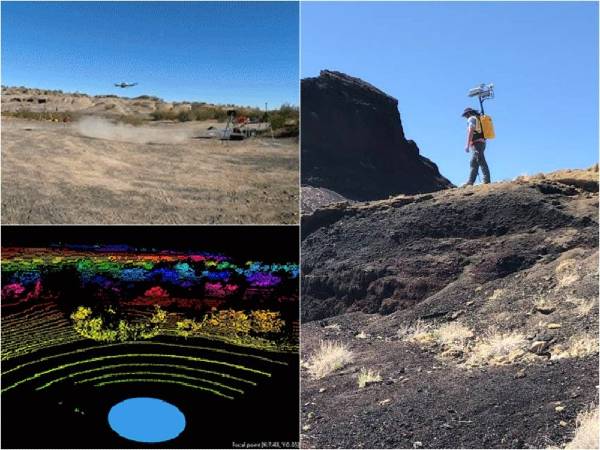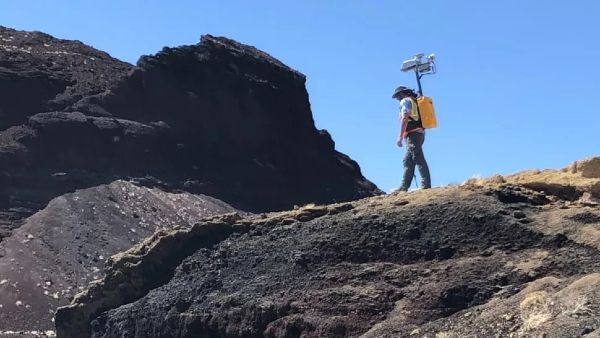Human explorers going to the Moon might send back unimagined, intricate maps of the lunar surface, all because of a new lunar backpack device developed by NASA and its partners.
What Is This Device?

Kinematic Navigation and Cartography Knapsack (KNaCK ), is a device that features a portable LIDAR scanner that continuously scans the ground as the user walks to gather detailed information about the topology of the surrounding surfaces.
“Basically, the sensor is a geodetic tool for exploration and scientific mapping that can generate ultra-high-resolution 3D maps with centimeter accuracy and provide a rich scientific context,” said Michael Zanetti, planetary scientist at NASA’s Marshall Space Flight Center.
“It will also help keep astronauts and rovers safe in non-GPS environments like the moon by determining the actual distance to distant landmarks and showing researchers in real time how far they have come and how far they need to go to reach their destination.”
Read: NASA’s New Test Assesses Mission Readiness of Astronauts Upon Landing
How Does This Backpack Work?
The system uses a technology called Frequency Modulated Continuous Wave (FMCW) LIDAR. As the name suggests, it emits a continuous, frequency-modulated laser beam.
When this light is reflected off a surface, its frequency changes. This altered light frequency is returned to the LIDAR detector and compared to the emitted light. Their difference is proportional to the distance to the surface, and this process creates a detailed topographic map.
Significance Of This Backpack.
The technology used in the backpack eliminates the need for fast electronics and is immune to ambient light interference. This is as seamless and efficient as you can imagine for a lunar environment.
The KNaCK can collect millions of measurement points per second and create a real-time navigation system that can operate in the dark to aid astronauts in navigating hostile extraterrestrial environments.
“As humans, we tend to focus on landmarks like certain buildings, groves of trees,”
Zanetti
“Things like that don’t exist on the moon. KNaCK continues to allow surface-traversing explorers to determine movement, direction and direction to distant peaks or bases of operation.
They may also mark specific places where unique minerals have been found. Or we created rock formations so that others can easily return for further study.”
Who Are The Other Partners In This Program?
NASA will be working with Torch Technologies Inc. to develop backpacks and Aeva Inc. For the supply of the LIDAR sensor, NASA will have to do some work on the further development of the prototype.
Field tests have shown this technique to be effective. In November 2021, it was used at NASA’s Kennedy Space Center in Florida to map the volcanic crater and 3D reconstruction of the sea barrier sand dunes.
Conclusion
The Backpack also needs some protection to protect it from the moon’s harsh solar radiation and low gravity. Kit shrinkage is also performed. Currently, the KNaCK is the size of a backpack and weighs approximately 18 kg (40 lbs).
“Utilizing the latest advances in Aeva’s LIDAR technology, our next-generation spacecraft, powered by Torch Technologies, will be the size of a soda can and will be able to operate on the lunar surface like never before,” said Zanetti.
This means astronauts can have real backpacks that can be filled with moon rocks while retaining their mapping and navigation capabilities, or they can be used for boring stuff like carrying gear.
We’re also very excited to see what the crashed astronauts look like in the lidar data.
